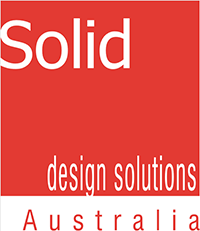DISCOVERY PHASE
Discovery: the act of finding or learning something for the first time. At Solid Design Solutions Australia (Solid Design) the Discovery Phase of our design engineering process process is performed to ensure a full understanding of the product goals and provide a positive user experience. This approach avoids late discovery of needs/opportunities while supporting a survey the competitive landscape ensuring that the desired market positioning is achieved.
The phase begins with the assignment of one of our certified Project Managers who will document the scope of work, gather requirements, and engage with all project stakeholders. Then the requirements for the product will be investigated to discover and fully define:
- Who are all of the Stakeholders that need to participate in designing and developing this product?
- Who are the users of the product, and what are their needs’ and ‘wants’ for the product?
- How and where will the product will be used?
- How will the product be distributed?
- How will the company’s branding strategy be integrated into the design?
- What does the cost point need to be for the product to be profitable?
- What is the size of the market?
- What risks exist that will threaten the development process or user adoption of the product?
Then a project plan will be developed tailored to the unique requirements of your product development needs. This will support the creation of detailed descriptions of work packages so that resource requirements can be determined. Appropriate resource requirements will be summarised, and the project team members will be selected. A project kick-off meeting, coordinated by our Project Manager, will mark the formal start of project work, with all project team members and key stakeholders participating. From there, our project team will hold brainstorming sessions, meet with key stakeholders and conduct user group studies to fully define the performance requirements for the product.
The Discovery Phase is when Solid Design gains a true understanding of the competitive landscape to identify features that will delight the user, differentiate the product and provide a basis for intellectual property protection. This process phase is often referred to as the fuzzy front end of a product’s life cycle when form, fit and functional needs and desires are determined, a business case for the product is established and innovation goals are identified. Solid Design’s experienced team has a unique ability to define the product requirements that improve on the initial product ideas. Utilizing this expertise is a great way to increase the probability of a successful, on time and budget product launch at the end of the design engineering process process. As the detailed work tasks are performed our Project Manager will coordinate regular meetings with team members and key Stakeholders, and formally report on the status of your program every other week with a written Status Report keeping you informed on progress, spending and issues. Standard deliverables for the Discovery Phase often include:
- Project Charter
- Scope Management Plan
- Requirements Management Plan
- Risk Management Plan
- Stakeholder Engagement Plan
- Detailed product requirements document
- Use Cases
- Competitor analysis
- Intellectual property protection assessment
- Market assessment of size, entry barriers and positioning options
- SWOT Analysis
- Product differentiation recommendations
- Branding options/requirements
- Risk assessment summary with identified mitigation and response strategies
- Time and cost budgets
- Design and development process recommendations
- Plan, budget and scope summary for the next phase
Next: Concept Phase of Product Design
Solid Design leverages a proven design engineering process to bring new ideas to reality. Our standard process is a Phase-Gate approach, this will be tailored to fit the requirements specific to your product design, development and testing needs. Simply click on any of the process phases to see a detailed description of the tasks and potential deliverable of that phase.

